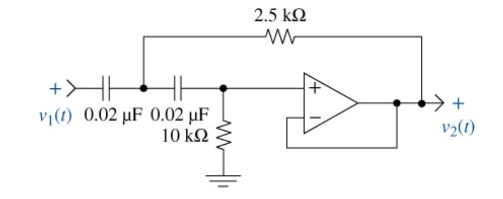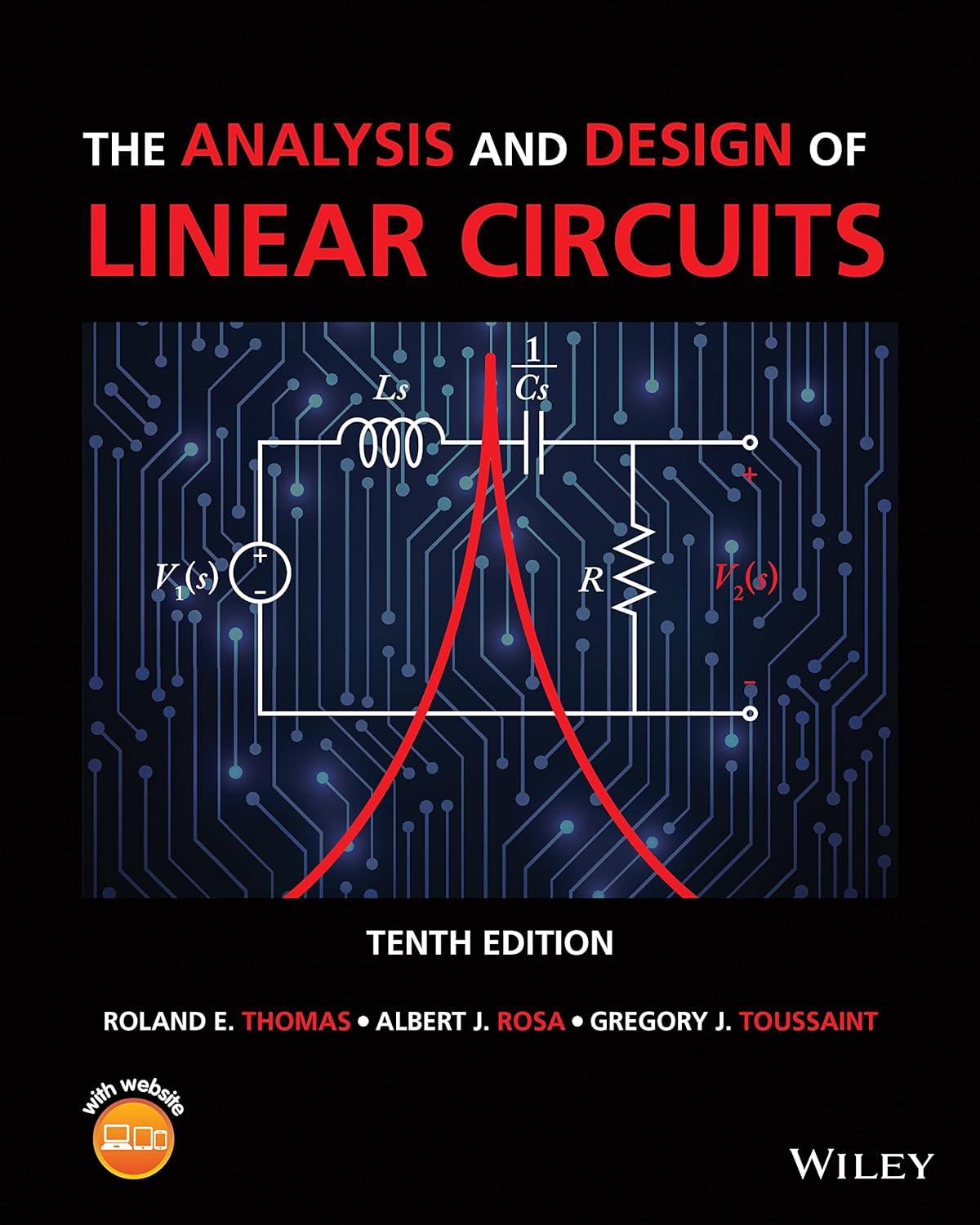Ten years after earning a BSEE, you return for a master's degree and sign on as the
Question:
Ten years after earning a BSEE, you return for a master's degree and sign on as the laboratory instructor for the basic circuit analysis course. One experiment asks the students to build the active filter in Figure P14=53 and measure its gain response over the range from \(150 \mathrm{~Hz}\) to \(15 \mathrm{kHz}\). The lab instructions say the circuit is a high-pass filter with \(\omega_{0}=10 \mathrm{krad} / \mathrm{s}\) and an infinite frequency gain of o dB. Everything goes well until a student, intrigued by the concept of infinite frequency, inputs \(1 \mathrm{MHz}\) and measures a gain of only 0.7. The student then inputs \(2 \mathrm{MHz}\) and measures a gain of 0.45 . The high-pass filter appears to be a bandpass filter! Motivated by an insatiable thirst for understanding, the student asks you for an explanation. You first check the student's circuit and find it to be correct. You next replace the OP AMP and get almost the same results. Desperate for an explanation (your credibility is on the line here), you read the course textbook (it is Thomas, Rosa, and Toussaint) and find the answer in Chapter 12 (Examples 12-5 and 12-7). What do you tell the student?

Step by Step Answer:

The Analysis And Design Of Linear Circuits
ISBN: 9781119913023
10th Edition
Authors: Roland E. Thomas, Albert J. Rosa, Gregory J. Toussaint





